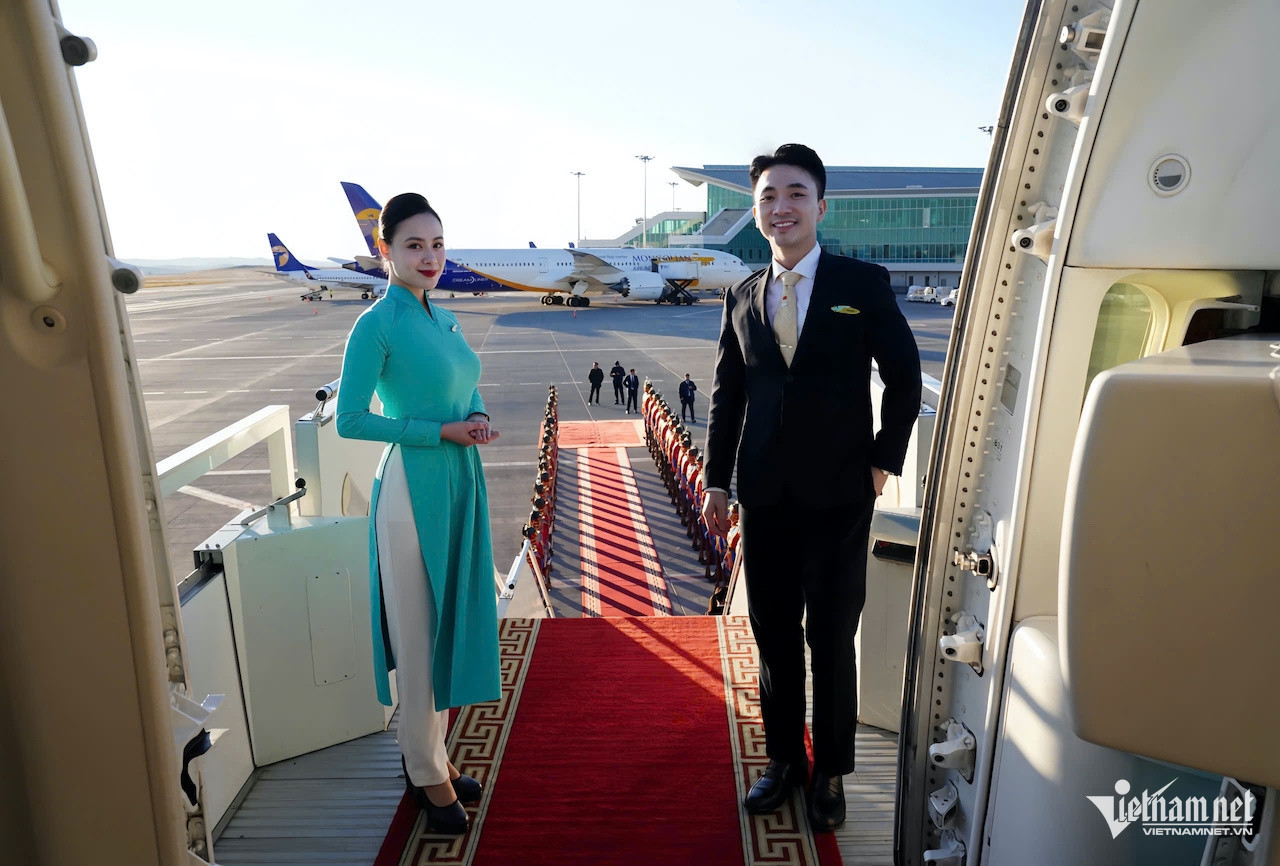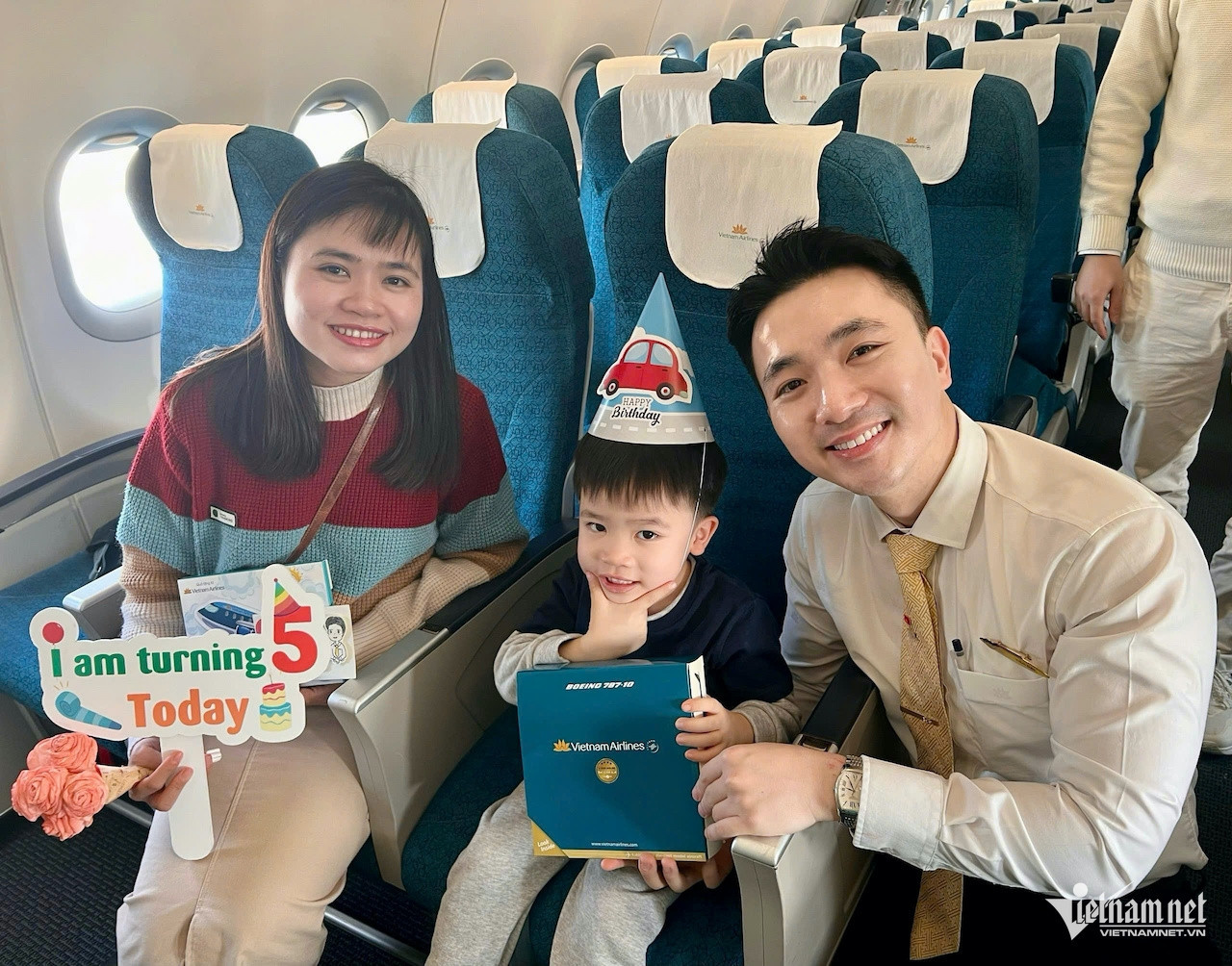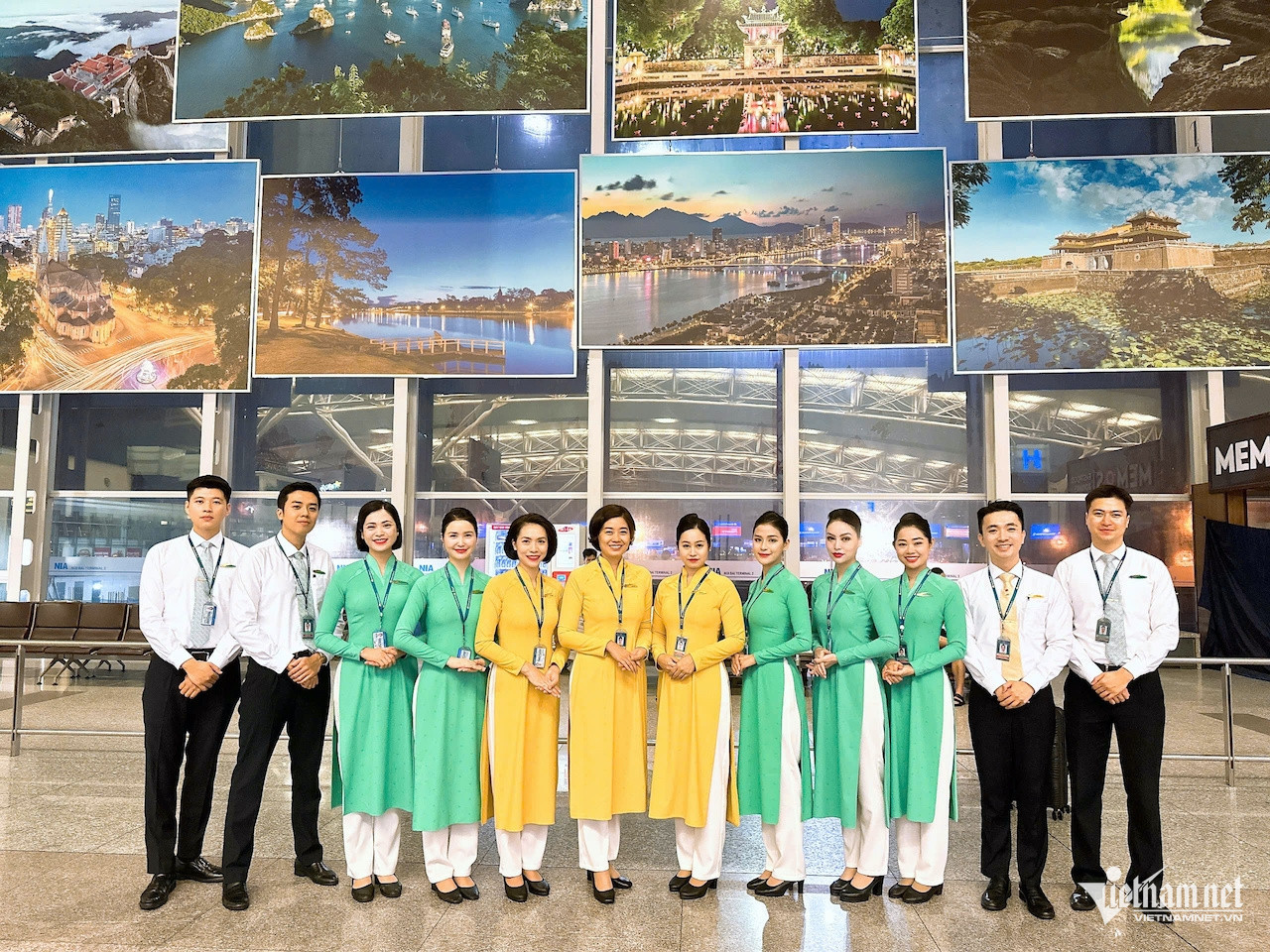With 14 years of experience working for Vietnam’s national airline, Nguyen Tien Dat has spent eight years serving on dozens of special flights carrying Party and State leaders.
Eight years of service on special flights

Although no one in his family worked in the aviation industry, Nguyen Tien Dat grew up next to Gia Lam Airport, where he had the opportunity to observe pilots and flight attendants daily. Realizing that his personality suited the service profession, he became interested in the field.
While in his second year at the National Economics University, Tien Dat applied to become a flight attendant. However, his lack of confidence and foundational knowledge led to his elimination in the first round despite his good looks.
Undeterred, he reapplied two years later and was accepted just as he received his university degree. This marked the beginning of his career as a flight attendant.
Now, after more than a decade, Dat has become a chief flight attendant and an in-flight service instructor, all while completing his master’s degree.
Reflecting on the process of being selected for special flights, Dat emphasizes that it is both a responsibility and an honor. Only 10% of the airline’s 3,000 flight attendants - approximately 300 individuals - meet the requirements for these assignments.
“To qualify for these special chartered flights, one must first serve on domestic flights in the business class section that accommodate high-ranking officials. The selection process is stringent, with numerous criteria to meet.
Each year, the airline’s safety and quality department compiles a list of eligible flight attendants. Some of the basic requirements include sufficient flight hours, a flawless record for the past year, and the ability to operate different types of aircraft used for special flights.
From this list, the supervising division further filters candidates before submitting the final names to the department head for approval. However, the process does not end there. The final list is then sent to the airline’s security division for background checks. Only those who pass all these stages are allowed to serve on special flights. I was fortunate to be selected after four years in the profession,” Dat explains.
No room for mistakes - not even a drop of coffee

On these special flights, many routes are flown for the first time, meaning flight attendants need not only expertise and skills but also exceptional endurance.
Typically, flight attendants receive their assignment one month in advance. A dedicated messaging group is created to coordinate, and multiple online meetings are scheduled. One day before departure, the crew gathers in person for final preparations.
“Regardless of the time of day, we must report four hours before departure to prepare documents and uniforms. We then move to the airport to receive supplies and equipment for the flight.
For destinations with existing airline routes, such as South Korea and Japan, operations are smoother. However, for new destinations, the process is more complex. After passengers disembark, flight attendants must collaborate with ground staff for cleaning and resupplying the aircraft. For instance, when serving high-ranking leaders on trips to Mongolia and Madagascar, we had to coordinate with local staff to ensure catering and services met expectations.
Completing these tasks can take at least three to four hours after landing, only then can we rest,” Dat recounts.
The longest special flight Dat served on was in November 2016, carrying a high-ranking leader from Hanoi to France, a 12-hour journey. Before that, the crew spent four hours preparing, totaling 16 hours of continuous service.
“After a two-hour technical stop in France to refuel, we continued to Cuba, flying another nine hours, followed by three hours of post-flight duties. In total, from departure at Noi Bai Airport, the crew worked for over 24 hours non-stop.
Of course, we rotated rest periods, but due to the demanding nature of the flight, break time was minimal. On special flights, attendants serve three meals, along with numerous additional services. Even though we were assigned shifts, actual rest time was limited to one to two hours, meaning we were virtually awake for the entire journey,” he explains.
On commercial flights, business class typically accommodates 28 passengers, but on special flights, 100% of passengers are VIPs.
“As such, our service must be impeccable. There is no margin for error - not even a single drop of coffee or tea can be spilled,” Dat emphasizes.
A firm handshake that fuels motivation

The first special flight Dat had the honor of serving on carried President Tran Dai Quang through several countries, including Peru, Italy, and Madagascar, in November 2016. It was the longest special flight in history, lasting 16 days and spanning multiple continents and cities worldwide.
“Although I was not assigned to the VIP cabin where President Tran Dai Quang was resting, at the end of the journey, he personally walked through the aircraft, shaking hands with each crew member. His firm handshake and words of gratitude gave our entire team a renewed sense of purpose. It was an immense encouragement, not just for me but for the whole crew,” Dat recalls.
Most recently, he served on a special flight carrying General Secretary To Lam to Mongolia. Dat describes him as warm and approachable, contrary to his public image.
“The General Secretary was very personable, asking about each staff member and flight attendant. Serving him was not stressful because he was always friendly,” Dat shares.
In 2024 alone, Nguyen Tien Dat has served on three special flights. Two of these carried General Secretary To Lam to China, Mongolia, Ireland, and France, while the third transported National Assembly Chairman Tran Thanh Man to Singapore and Japan.
N. Huyen